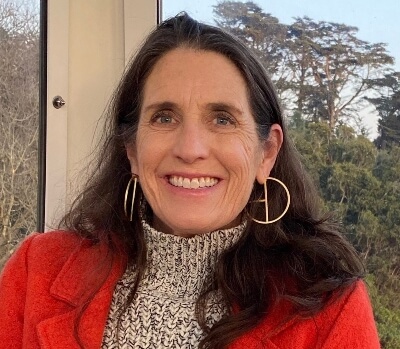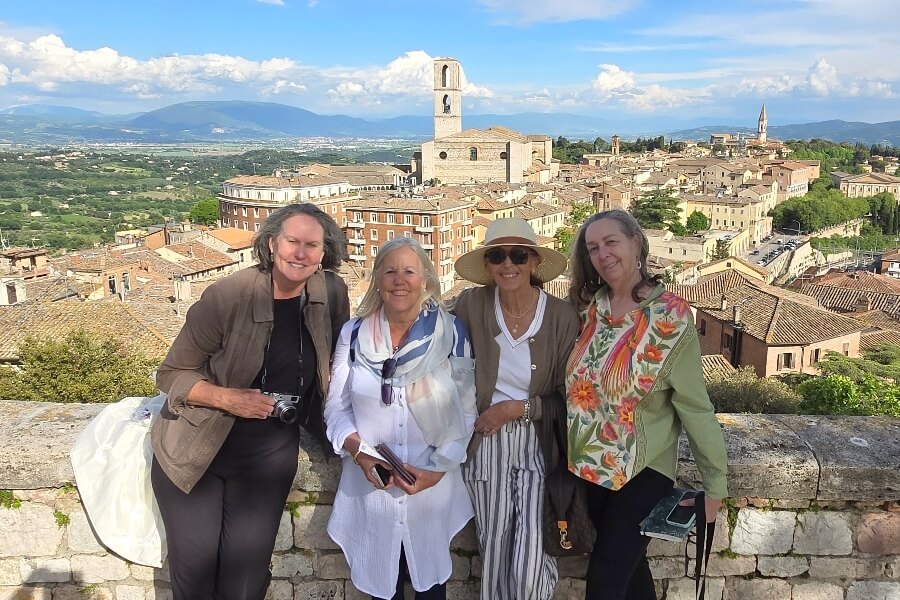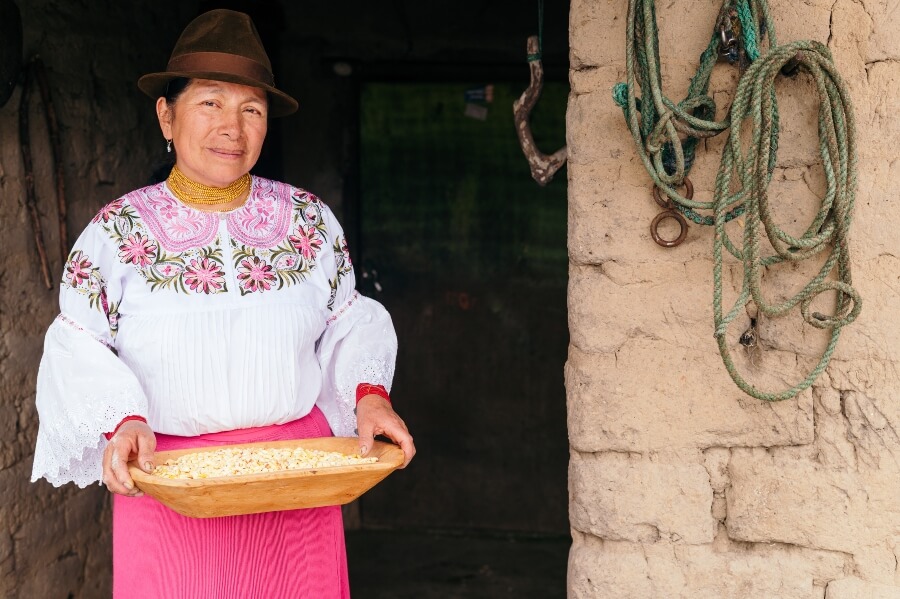Whenever NextTribe does a fashion story, we are guaranteed to get a few complaints. Not about the clothes necessarily, but about the models in the photos. Readers write in to say they are upset that the models are so young and dewy and do not represent the “Age Boldly” tagline. Where are women who look like themselves?
I have to agree with them.
When we show who we are, how old we are, what we are doing, and what we look like, we begin to normalize aging.
When we show clothes, we use photos from the brands’ websites (we don’t have a budget yet to do our own photo shoots for every fashion story), and the brands’ photos are almost always of women who could be our daughters or granddaughters. The true issue lies with the brands, I say in my response to such complaints, and I encourage readers to write the companies to ask for more representation.
Stephanie O’Dell has noticed this issue as well, and has taken extraordinary steps to make sure women our age are represented in advertising and marketing. O’Dell, a fashion stylist, has started a modeling agency called Celebrate the Gray, which exclusively features authentic-looking gray-haired women over 50.
I was thrilled to learn about O’Dell and Celebrate the Gray. I believe her mission will go a long way toward changing how society sees us and we see ourselves. Here, she tells us about her work and how you can help.
Read More: Many Tried Out Gray Hair During the Pandemic. Is it Time to Stay Gray?
When and why did you start representing older models?
Celebrate The Gray started as a blog to find out if there was a need for a fashion line for the 50+ woman. Many of my styling clients told me the fashion industry had forgotten them and they felt invisible. I met and interviewed more than 100 inspiring women (referred by friends and family) and asked myself, “Why don’t I see these women in advertising? Because I want to be like these women!”
I recruited a photographer and makeup artist for a small photo shoot with five of the women. The energy and excitement at the shoot was inspiring. The women saw themselves in modern styling with updated hair and makeup, and it gave them power back. I got some local and national press and soon women were reaching out to me asking to be part of what I was doing.
At that point I tried to find an agency to represent all the “real” women that wanted to inspire other women to take back the power in their aging. No agency wanted to partner so I decided to start my own agency, Celebrate The Gray. I now represent over 65 gray-haired models and am working with brands to understand how we want to be represented. I believe we can’t be what we don’t see.
What kind of work did you do before founding Celebrate the Gray?

I was and still am a fashion stylist, working for Athleta, Stitch Fix, and my own styling business for more than 10 years. I found styling through getting a part-time job at Athleta when my kids were in middle school and high school. I had left my career in HR and customer service when my youngest was two and had become a full-time mom. I know how difficult it is to find your passion and purpose in midlife. You have to try a lot of different things and be open to opportunities that come your way. Women don’t always see all they have to offer to a company or society; mothers are the most underrated people around.
What was the initial response of brands to your older fashion models?
The initial response was that the older woman doesn’t care about being seen, but that is slowly changing. I am working with SwimSpot, an amazing brand that is doing an Age Inclusion campaign in an authentic and powerful way. There is a lot of education that needs to happen with decision makers, but also the midlife woman needs to be vocal in what she needs and wants. We all can help change the age of models we see, which are in the same age range that have been used since the 50’s. The visual and narratives need to be updated so women don’t feel invisible as they age.
When did demand start to increase?
COVID has helped with demand; our priorities have shifted. I also think our generation isn’t willing to be cast aside. We are much more vocal about what we want and need. We realize how undervalued and under-represented we are and will spend dollars with brands that include us. COVID has allowed many women to go gray, and the biggest comment I hear from them is how authentic they feel. It takes a huge community to make change, and small changes lead to big changes.
What do you look for in a model you sign up?
I feel everyone is beautiful and accept anyone that fits these requirements.
The only requirements are that you are over 50, gray or going gray, and haven’t had plastic surgery. If a woman reaches out to me, I know that she wants to be part of the mission of Celebrate The Gray – to change and update the face of aging for the 50+ woman! I accept anyone that fits those requirements; I feel everyone is beautiful and would never assume I know what a brand is looking for. The Celebrate The Gray models are ambassadors for age inclusion.
What brands have been using your models?
Athleta, Kikoko, Revel, Gennev, Swimspot.
How are attitudes about women over 50 changing in media and advertising, and the culture at large?

The attitudes are changing, but it’s a slow burn and partly our fault for buying into the age-denial messaging that advertising serves us. When we buy hair dye, anti-aging creams and shapewear we reinforce that we want to look younger and are not happy with our older selves. When we show who we are, how old we are, what we are doing and what we look like, we begin to normalize aging. When we show the possibilities of aging, we begin to rewrite the age models and no longer get told the limitations of our aging. We have the power to change the way age is viewed when we take back our power and live in possibility. It’s time to stop being told you look great for your age; what picture are they looking at to compare me to?
As far as your personal styling side of the business, what mistakes do you most often see in how women this age dress?
Midlife is a time of transitions: Menopause, empty nest, job or relationship change, personal or family health issues. Individually these transitions are hard, but together they are overwhelming. In addition to the transitions, we see less and less representation of the older woman. We are told to dye our hair, lose our wrinkles and lose weight. You either buy into that messaging, rise above it all, or begin to disappear.
I understand that I must celebrate the possibility not the limitations of my body.
The most common issue I see with clients is not understanding their shape so they dress in clothes that are too big for them, making themselves look larger. They see only their problem areas (only problems to them and no one else), and they don’t see their unique beauty.
Another issue is understanding their style. It may have changed due to their transitions. So helping clients understand how they show up and if it fits into their life is important.
And lastly, they begin to dress to disappear (wearing no color). Introducing color into your wardrobe is fantastic as we age. Color is the difference between walking outside on a spring day versus a winter day. Which one makes you feel better? Just like flowers, color attracts people and all the research shows that community and interaction keeps us young. If someone is opposed to color, then featuring texture, pattern, or interest into your wardrobe also allows you to be visible.
Once clients understand their shape, what style/lifestyle they are living, and give themselves permission to brighten up their wardrobe, they begin to take back power in their aging.
I’ve noticed that you don’t have gray hair. How did that happen?
LOL, I do have gray hair. I have never dyed my hair, and it is coming in slowly (even slower since I stopped plucking out my grays). I may not be gray, but Celebrate The Gray is about all the grays of aging. It may be your hair, wrinkles, mind, or body. Mine is my body, as I have been an athlete and runner all my life. I took great pride in my strong legs (I was gymnast in middle and high school), and they have changed drastically. I was sad for a while, but then realized that power they still give me. I can still run, hike and bike. I understand that I must celebrate the possibility not the limitations of my body.
Read More: Models for Laura Geller Will All be Over 40 Now: Will Other Beauty Brands Follow?
























1 Comment